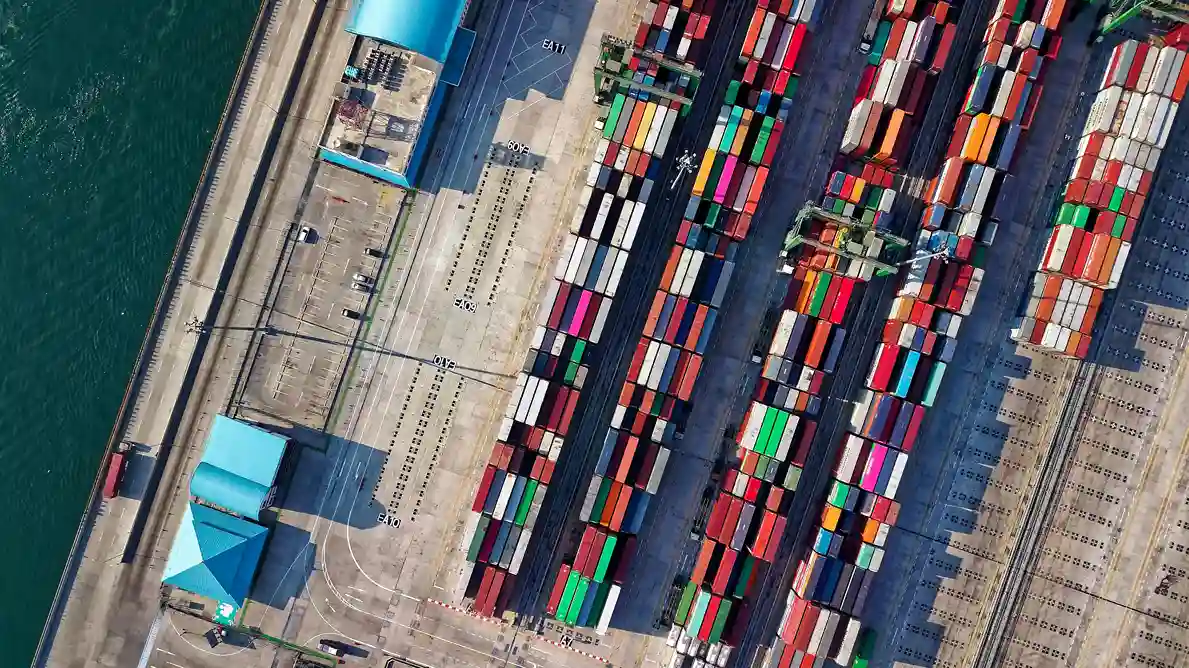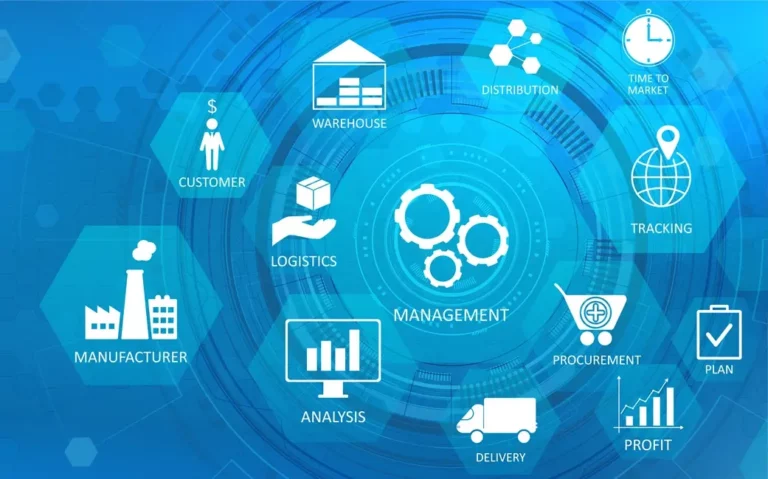Best Supply Chain Collaboration Software for 2025
In today’s fast-paced business world, supply chains are becoming more complex by the day. From managing suppliers across the globe to ensuring that products are delivered on time, every part of the process requires constant attention.
Supply chain collaboration software plays a key role in helping businesses manage this complexity, bringing together data, teams, and processes to ensure smoother operations. As we head into 2025, the right collaboration tools will be crucial in optimizing supply chains and driving business growth.
In this blog, we’ll take a deep dive into the top supply chain collaboration software available in 2025, starting with what it is, how to choose the best one, and exploring the leading platforms in the market today. Let’s get started!
What is Supply Chain Collaboration Software?
Supply chain collaboration software is designed to help businesses manage and optimize their supply chain operations by improving communication, data sharing, and coordination between different teams, suppliers, and logistics providers. These tools are meant to streamline the entire supply chain process, from procurement to production and delivery.
At its core, collaboration software facilitates seamless communication across departments and with external partners, making sure that everyone has access to the same real-time data. Whether you’re working with internal teams, suppliers, or customers, the software ensures that everyone is aligned and can make informed decisions based on shared information.
Key features typically include:
- Real-time visibility into shipments and inventory
- Automated workflows to streamline procurement and logistics
- Tools for managing supplier relationships and performance
- Advanced analytics and forecasting capabilities
- Communication platforms for cross-team collaboration
With all these tools in one place, supply chain collaboration software helps businesses reduce inefficiencies, cut costs, and improve service levels.
How to Choose the Best Supply Chain Collaboration Software
Choosing the right supply chain collaboration software is crucial to the success of your business operations. With so many options available, it can be tough to figure out which one fits your company’s needs. Here are some key factors to consider when making your decision:
1. Ease of Integration
The software should easily integrate with your existing systems like ERP, WMS, TMS, or CRM. This ensures smooth data flow across the organization and eliminates the need for manual data entry.
2. Real-Time Visibility
Look for software that offers real-time tracking and visibility into your entire supply chain. This will help you quickly identify bottlenecks, track shipments, and make informed decisions.
3. Collaboration Features
Your software should enable easy communication and collaboration between different teams and external partners. Tools like messaging systems, shared dashboards, and document collaboration are essential.
4. Scalability
As your business grows, your supply chain collaboration needs will evolve. Choose a platform that can scale with your business, whether you’re expanding internationally or diversifying your supplier base.
5. User-Friendly Interface
The software should have an intuitive and easy-to-use interface. A complicated system could overwhelm your team and reduce productivity, which is the last thing you want.
6. Support and Training
Good customer support is essential for any software you choose. Ensure that the provider offers robust training resources, so your team can make the most of the system.
7. Cost-Effectiveness
While you don’t want to compromise on quality, it’s important to consider your budget. The software should provide a good return on investment by improving operational efficiency and cutting costs in the long term.
Once you’ve considered these factors, it’s time to explore some of the top supply chain collaboration software options available in 2025.
Top Supply Chain Collaboration Software
| Software | Best For | Pros | Cons |
| GoComet | AI-driven freight management and real-time shipment tracking | 1. Real-time shipment tracking 2. Automated vendor management 3. AI-powered freight procurement | 1. Limited advanced customization 2. Initial learning curve |
| SAP SCM | Enterprises needing robust integration with SAP ERP | 1. End-to-end visibility across the supply chain 2. AI-driven demand forecasting 3. Automated workflows | 1. Steep learning curve 2. Complex implementation |
| Oracle SCM Cloud | Cloud-based logistics optimization and supplier performance tracking | 1. Multi-tier supplier coordination 2. AI-based risk management 3. Real-time logistics visibility | 1. Expensive for small businesses 2. Steep learning curve |
| Anaplan for Supply Chain | Real-time supply chain planning and scenario-based decision-making | 1. Scenario-based planning 2. Collaborative forecasting 3. Automated workflow management | 1. Customization complexity 2. Pricing transparency issues |
| E2Open | Global supply chain visibility and supplier collaboration | 1. Supplier collaboration portal2. AI-driven inventory optimization3. Automated freight coordination | 1. Integration complexity 2. Training requirement |
| Manhattan Associates SCM | Large-scale warehouse, inventory, and logistics operations | 1. Real-time order fulfillment 2. AI-powered logistics management 3. Supplier collaboration dashboards | 1. Expensive for mid-sized businesses 2. Complex deployment |
| Blue Yonder | AI-powered forecasting and demand planning | 1. AI-powered demand forecasting 2. Autonomous supply chain execution 3. Predictive logistics management | 1. Expensive for mid-sized businesses 2. Requires extensive training |
| Kinaxis RapidResponse | Rapid response supply chain planning and real-time visibility | 1. Real-time scenario planning 2. Multi-tier supplier collaboration 3. AI-driven risk management | 1. Limited customization 2. Data complexity |
| Logility | AI-driven demand planning and inventory optimization | 1. Cloud-based collaboration hub 2. AI-powered demand forecasting 3. Automated supply chain analytics | 1. Customization gaps 2. Pricing variability |
| Infor Nexus | Global supply chain network with logistics optimization | 1. Global supply chain network 2. AI-driven logistics optimization 3. Integrated compliance tools | 1. High setup costs 2. Long implementation time |
| Coupa Supply Chain Design & Planning | Procurement optimization and supplier management | 1. Supplier performance tracking 2. Automated procurement workflows 3. AI-driven spend optimization | 1. Integration challenges |
| Epicor SCM | Manufacturers needing seamless integration with ERP systems | 1. AI-powered inventory planning 2. Real-time order tracking 3. Integrated supply chain visibility | 1. Best for manufacturing-only use 2. ERP dependency |
Here are the top supply chain collaboration software platforms for 2025. These tools offer a range of features to help businesses optimize their supply chains, improve visibility, and foster collaboration.
1. GoComet
GoComet is an AI-powered platform that enhances communication between shippers, carriers, and vendors. It provides real-time freight visibility and simplifies procurement. The software uses predictive analytics to prevent delays, helping businesses stay ahead of disruptions.
Automated vendor management ensures the best carrier selection at the lowest cost. It also supports carbon emissions tracking for sustainability efforts. AI-driven insights improve decision-making and help teams coordinate seamlessly. The platform centralizes data and communication to eliminate miscommunication and reduce errors.
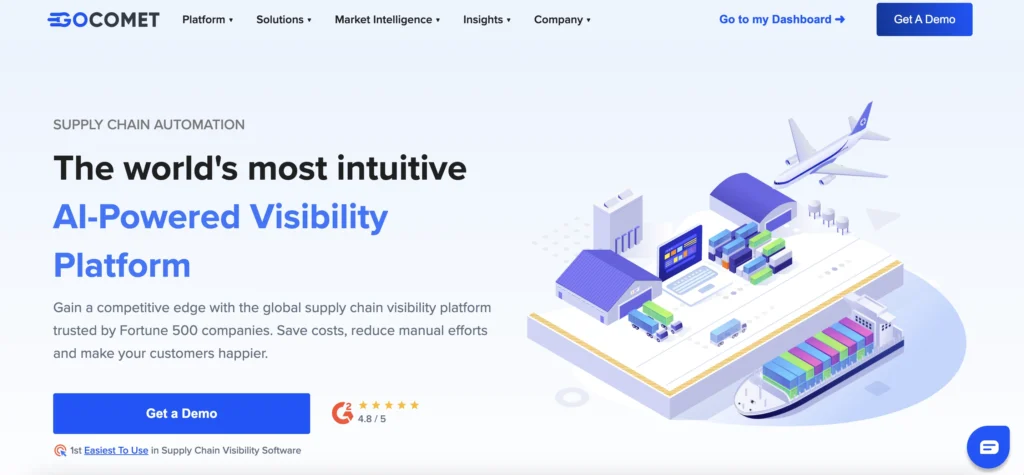
Key Features:
✅ AI-Powered Freight Procurement: Automates vendor negotiations, ensuring the best shipping rates with minimal manual effort.
✅ Real-Time Shipment Visibility: Tracks shipments across carriers with predictive ETAs to reduce delays and improve coordination.
✅ Vendor Collaboration Hub: Centralized communication for shippers, freight forwarders, and suppliers to align operations.
✅ Automated Exception Alerts: AI-driven notifications flag shipment disruptions, helping teams take quick corrective actions.
Limitations:
❌ Limited Advanced Customization: May not fully integrate with highly specialized logistics systems without additional customization.
❌ Initial Learning Curve: AI-based automation requires training to maximize benefits, especially for traditional supply chain teams.
Ratings:
- G2: 4.8/5
- Gartner: 4.9/5
2. SAP Supply Chain Management (SCM)
SAP SCM provides comprehensive tools for managing procurement, logistics, and inventory across multiple teams. It enables real-time data sharing, keeping suppliers and logistics aligned. AI-powered forecasting helps prevent stock shortages and improves demand planning.
The platform offers automated procurement tools, streamlining vendor selection and contract negotiation. Integrated communication hubs provide better visibility and collaboration. Seamless ERP integration ensures smooth workflows across departments, improving overall supply chain efficiency.
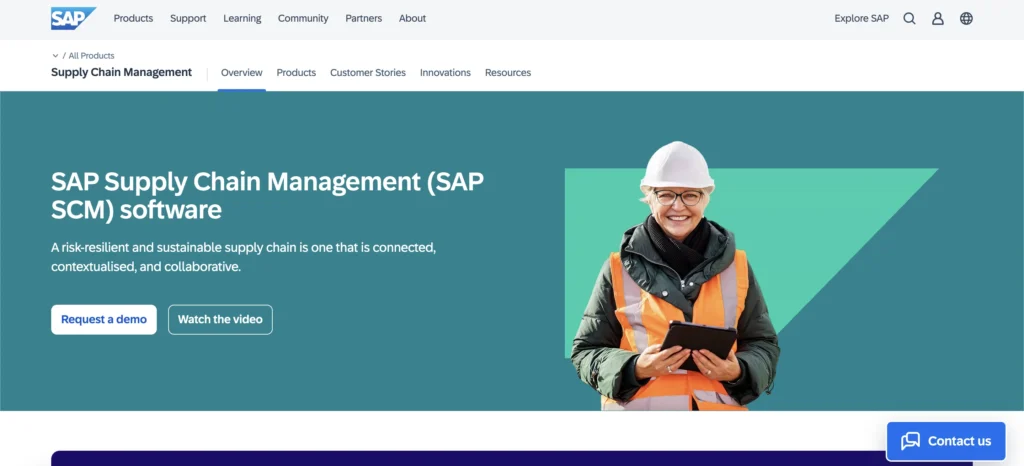
Key Features:
✅ End-to-End Supplier Collaboration: Connects suppliers, manufacturers, and logistics providers on a unified platform.
✅ AI-Powered Inventory Planning: Automates demand forecasting to prevent stock shortages and excess inventory.
✅ Integrated Order Management: Ensures real-time order tracking and fulfillment coordination across supply chain partners.
✅ Seamless ERP Integration: Syncs procurement, finance, and logistics within SAP’s ecosystem for smooth operations.
Limitations:
❌ Complex Implementation: Best suited for enterprises with the budget for extensive software integration.
❌ Complex User Interface: Requires training for new users due to its broad functionality and deep customization options.
Ratings:
- G2: 4.1/5
- Gartner: 4.3/5
3. Oracle Supply Chain Management (SCM) Cloud
Oracle SCM Cloud makes supplier coordination and logistics management seamless by keeping vendors, freight partners, and teams connected. It streamlines procurement, inventory, and shipping while enabling real-time data sharing. With AI-driven insights, businesses can detect risks early, make informed decisions, and keep operations efficient.
This intelligent supply network platform improves visibility and automates workflows for smoother operations. Real-time tracking ensures transparency, while predictive analytics help prevent delays. If you’re looking for a smarter way to manage vendor relationships and logistics, Oracle SCM Cloud is a strong choice.
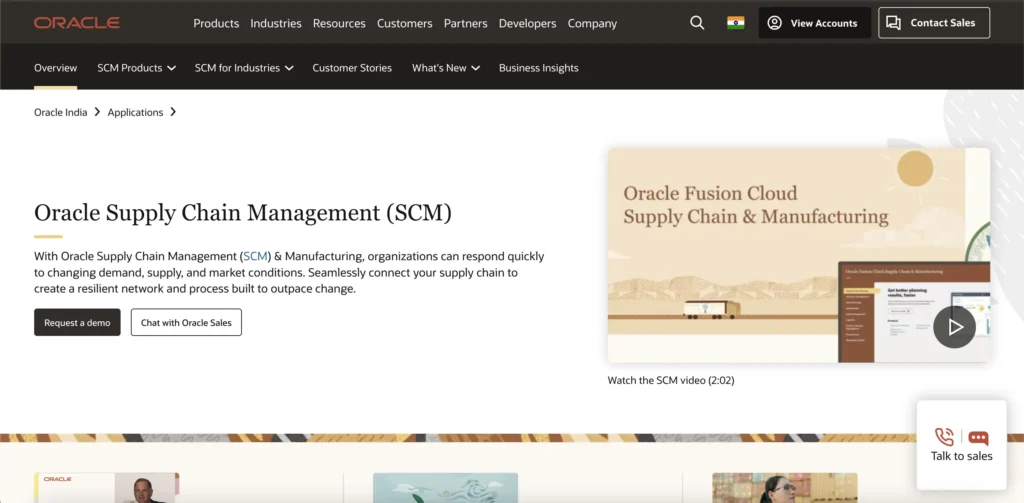
Key Features:
✅ Multi-Tier Supplier Coordination: Enhances collaboration between manufacturers, suppliers, and logistics providers.
✅ AI-Based Risk Management: Identifies supply chain disruptions before they impact operations, enabling proactive decision-making.
✅ Real-Time Logistics Visibility: Tracks shipments and provides real-time inventory updates for all stakeholders.
✅ Automated Procurement Workflows: Simplifies supplier negotiations and purchase order approvals.
Limitations:
❌ Steep Learning Curve: Advanced analytics and AI-driven planning require expertise to fully utilize.
❌ Expensive for Small Businesses: Subscription costs may be high for startups and mid-sized enterprises.
Ratings:
- G2: 4.5/5
- Gartner: 4.7/5
4. Anaplan for Supply Chain
Anaplan helps businesses coordinate suppliers, logistics, and inventory by bringing real-time data and predictive planning into one platform. It streamlines decision-making by enabling teams to collaborate, share forecasts, and adjust plans instantly. With AI-driven insights, companies can respond to demand changes, reduce inefficiencies, and keep operations running smoothly.
This connected planning tool enhances supply network visibility and automates workflows for better efficiency. Scenario-based modeling helps businesses prepare for disruptions and optimize supplier coordination. If you need a flexible platform for demand forecasting and real-time supply planning, Anaplan is a great choice.
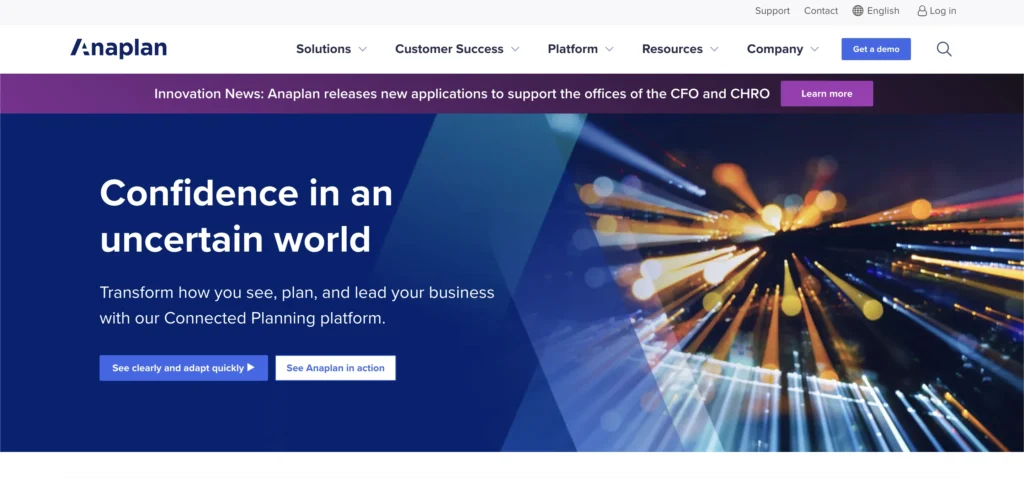
Key Features:
✅ Scenario-Based Planning: Simulates supply chain disruptions and enables businesses to create proactive action plans.
✅ Collaborative Forecasting: Enables real-time data sharing between suppliers, logistics teams, and procurement managers.
✅ Automated Workflow Management: Eliminates manual work in supply chain planning, ensuring faster decision-making.
✅ Cloud-Based Real-Time Insights: Provides a centralized platform for suppliers and teams to adjust strategies dynamically.
Limitations:
❌ Customization Complexity: Advanced configurations require IT support for tailored supply chain planning needs.
❌ Pricing Transparency Issues: Costs vary based on company size and required features.
Ratings:
- G2: 4.6/5
- Gartner: 4.2/5
5. E2Open
E2Open is a cloud-based platform that connects businesses with suppliers, manufacturers, and logistics partners. It streamlines procurement, production, and shipping processes, ensuring all parties have access to real-time data. This connectivity enhances efficiency and reduces delays across the entire supply chain.
By integrating AI-driven analytics, E2open helps companies anticipate potential disruptions and respond proactively. Its unified platform offers visibility into every step of the product journey, from the factory floor to the customer’s hands. For businesses aiming to optimize their supply chain operations, E2open provides a comprehensive and connected solution.
Key Features:
✅ Supplier Collaboration Portal: Streamlines order tracking, approvals, and compliance documentation in one interface.
✅ AI-Driven Inventory Optimization: Adjusts stock levels based on demand changes, reducing waste and delays.
✅ Automated Freight Coordination: Connects carriers, shippers, and manufacturers to improve delivery schedules.
✅ Compliance and Trade Automation: Ensures adherence to import/export regulations and customs compliance.
Limitations:
❌ Integration Complexity: Some businesses require additional IT support for full ERP and logistics software integration.
❌ Training Requirement: AI-driven features may take time to master for traditional supply chain teams.
Ratings:
- G2: 4.1/5
- Gartner: 4.3/5
6. Manhattan Associates SCM
Manhattan Associates is a logistics coordination platform that helps businesses manage inventory, transportation, and supplier relationships with ease. It connects retailers, vendors, and freight partners, ensuring seamless communication and real-time visibility. With AI-driven automation, businesses can optimize fulfillment, streamline distribution, and improve overall efficiency.
This intelligent supply network solution enhances inventory accuracy, reduces shipping delays, and strengthens vendor coordination. Real-time tracking and predictive analytics help businesses respond quickly to demand shifts and logistics challenges. If you’re looking for a powerful tool for warehouse and transportation management, Manhattan Associates SCM is a solid choice.
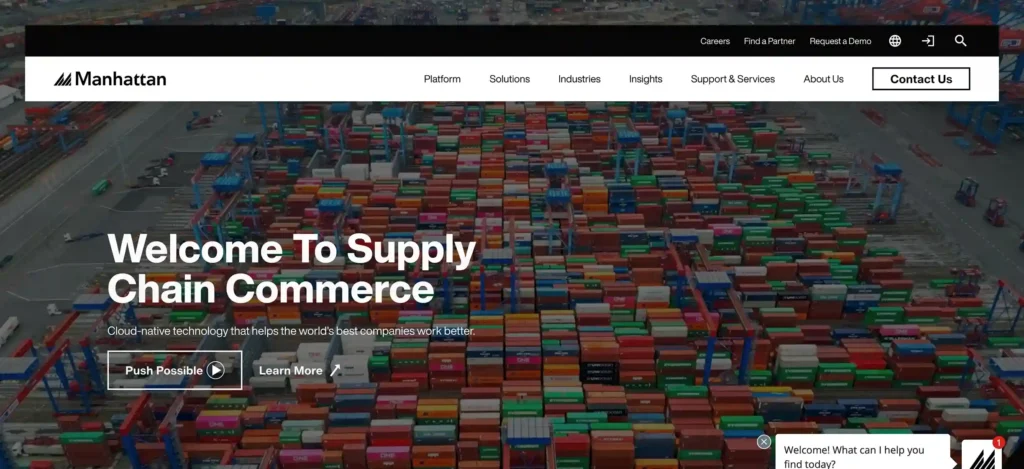
Key Features:
✅ Warehouse & Inventory Collaboration: Ensures real-time stock visibility across suppliers, warehouses, and retailers.
✅ AI-Driven Logistics Optimization: Suggests optimal routes and reduces transportation costs for faster deliveries.
✅ Freight Planning & Execution: Improves carrier selection and load optimization with automated decision-making.
✅ Supplier Coordination Hub: Centralizes communication between manufacturers, suppliers, and logistics teams.
Limitations:
❌ Not Ideal for Small Businesses: Designed for enterprises with large-scale logistics and distribution needs.
❌ Complex Deployment: Requires expert guidance for full implementation.
Ratings:
- G2: 4.4/5
- Gartner: 4.6/5
7. Blue Yonder (formerly JDA Software)
Blue Yonder is a collaborative supply chain platform that connects suppliers, manufacturers, and logistics teams to improve efficiency and visibility. It enables businesses to synchronize demand planning, inventory management, and transportation in real time. With AI-driven forecasting, companies can anticipate supply disruptions, optimize stock levels, and ensure smooth order fulfillment.
This end-to-end supply coordination tool enhances supplier relationships, automates workflows, and reduces delays. Predictive analytics provide actionable insights, helping businesses make faster, smarter decisions. If you need a powerful solution for supply chain synchronization and partner collaboration, Blue Yonder is a great choice.
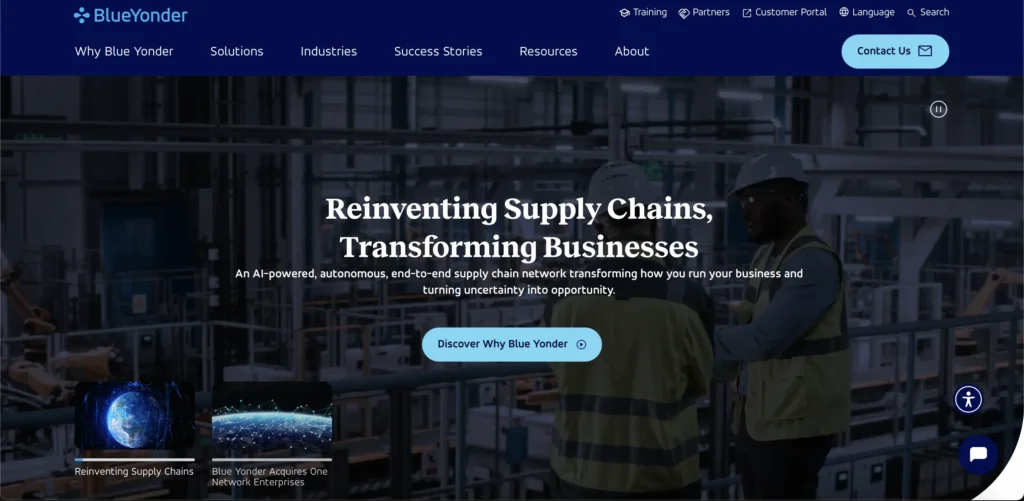
Key Features:
✅ AI-Powered Demand Planning: Analyzes sales trends and supply chain data for better inventory forecasting.
✅ Autonomous Supply Chain Execution: Reduces manual interventions with automated decision-making tools.
✅ Predictive Logistics Management: Improves shipment tracking and proactively addresses potential supply chain risks.
✅ Multi-Enterprise Collaboration: Allows suppliers, manufacturers, and distributors to work within a shared system.
Limitations:
❌ Expensive for Mid-Sized Businesses: Best suited for large enterprises with high logistics complexity.
❌ Requires Extensive Training: AI-driven tools need proper onboarding for effective use.
Ratings:
- G2: 4.1/5
- Gartner: 4.4/5
8. Kinaxis RapidResponse
Kinaxis RapidResponse is a real-time supply coordination platform that connects suppliers, manufacturers, and logistics teams for faster decision-making. It enables businesses to respond quickly to demand fluctuations, supply disruptions, and inventory changes. With instant data sharing, all stakeholders stay aligned, reducing delays and inefficiencies.
This agile supply planning solution enhances visibility, automates workflows, and improves collaboration across the entire network. AI-powered scenario planning helps businesses anticipate risks and adjust strategies in real-time. If you’re looking for a fast, responsive tool for supply chain alignment and partner coordination, Kinaxis RapidResponse is a strong choice.
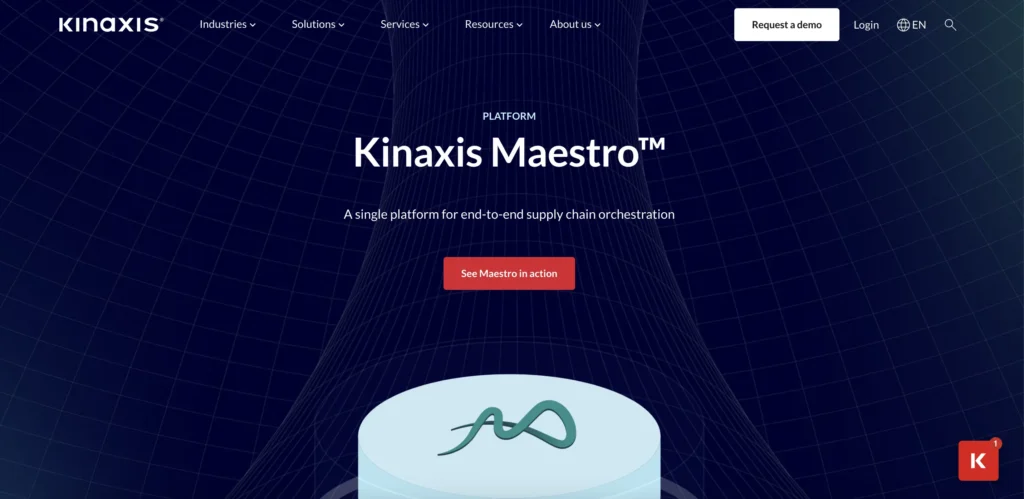
Key Features:
✅ Cloud-Based Collaboration Hub: Brings together suppliers, manufacturers, and retailers for synchronized planning.
✅ AI-Powered Demand Forecasting: Reduces inventory shortages and improves order fulfillment accuracy.
✅ Integrated Supplier Visibility: Provides real-time updates on stock levels and shipment status.
✅ Automated Logistics Coordination: Helps manage transportation scheduling and reduces shipment errors.
Limitations:
❌ Customization Gaps: May not support all niche supply chain requirements without custom development.
❌ Pricing Variability: Costs fluctuate based on business size and required features.
Ratings:
- G2: 4/5
- Gartner: 4.5/5
9. Logility
Logility is a supply chain synchronization platform that helps businesses streamline planning, inventory management, and supplier collaboration. It connects manufacturers, vendors, and logistics teams to ensure seamless coordination and real-time data sharing. With AI-powered forecasting, businesses can reduce stock imbalances, anticipate disruptions, and optimize supply flows.
This intelligent supply planning solution enhances visibility, automates decision-making, and improves supplier relationships. Predictive analytics help businesses adjust strategies based on shifting demand and logistics constraints. If you’re looking for a smart tool for supply chain alignment and operational efficiency, Logility is a solid choice.
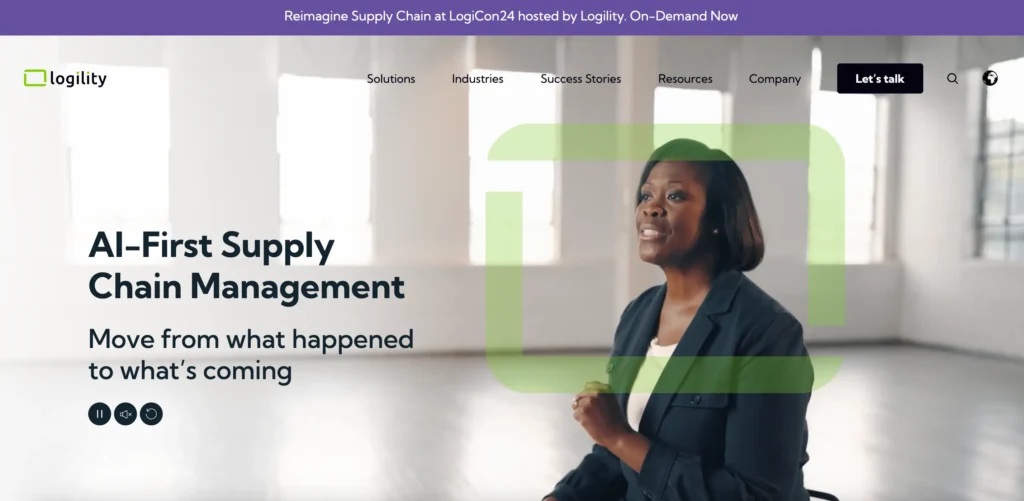
Key Features:
✅ AI-Powered Demand Planning: Reduce forecasting errors and improve inventory management.
✅ Integrated Supplier Collaboration: Share data and streamline procurement with partners.
✅ Warehouse & Transportation Planning: Optimize logistics operations with real-time insights.
✅ Automated Supply Chain Analytics: Get predictive insights for smarter decision-making.
Limitations:
❌ Customization Limits: May not fully support unique business models.
❌ Pricing Transparency Issues: Costs depend on specific features and usage.
Ratings:
- G2: 4.1/5
- Gartner: 4.6/5
10. Infor Nexus
Infor Nexus is a connected supply network platform that enhances collaboration between suppliers, manufacturers, and logistics providers. It enables real-time data sharing, ensuring all stakeholders have up-to-date visibility into inventory, shipments, and supplier performance. With AI-powered automation, businesses can proactively address disruptions and improve supply chain efficiency.
This intelligent logistics and procurement solution helps streamline supplier coordination, optimize freight movement, and reduce lead times. Predictive insights allow businesses to make faster decisions and maintain smooth operations. If you’re looking for a cloud-based platform for end-to-end supply chain collaboration, Infor Nexus is a strong choice.
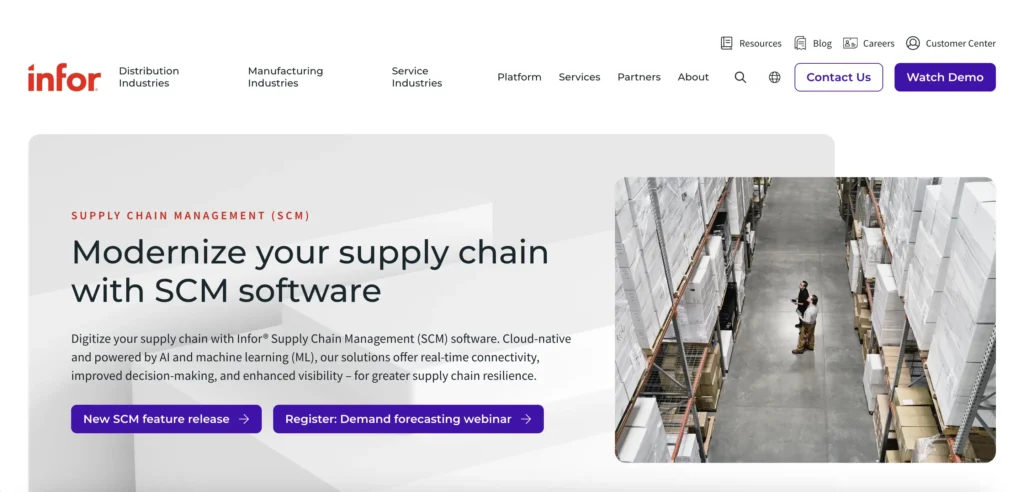
Key Features:
✅ Global Supply Chain Network: Connects suppliers, manufacturers, and carriers across international markets.
✅ AI-Driven Logistics Optimization: Identifies bottlenecks and suggests better routes for faster deliveries.
✅ Integrated Compliance & Trade Management: Ensures seamless import/export processes and regulatory adherence.
✅ Real-Time Shipment Tracking: Enhances visibility across global freight movements.
Limitations:
❌ High Setup Costs: Best for enterprises managing complex global supply chains.
❌ Long Implementation Time: Full deployment may take several months.
Ratings:
- G2: 4.1/5
- Gartner: 4.2/5
11. Coupa Supply Chain Design & Planning
Coupa is a supply coordination and procurement platform that connects businesses with suppliers, logistics providers, and finance teams. It streamlines sourcing, supplier management, and demand planning while ensuring real-time visibility across the supply network. AI-driven insights help businesses optimize procurement costs, track supplier performance, and prevent disruptions.
This intelligent supply planning solution automates workflows, enhances supplier collaboration, and improves cost efficiency. Predictive analytics provide real-time insights, enabling businesses to adjust to shifting demand and logistics challenges. If you’re looking for a data-driven platform for supplier alignment and procurement optimization, Coupa is a strong choice.
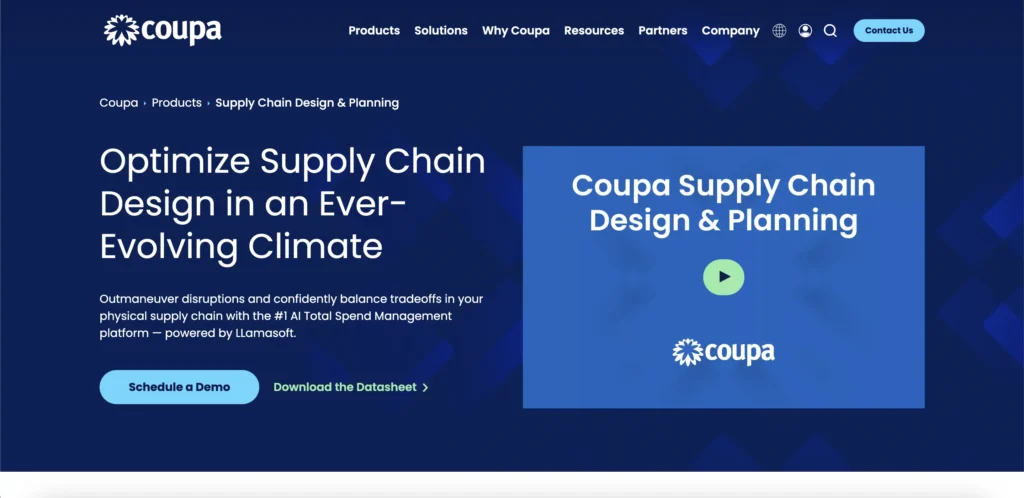
Key Features:
✅ Supplier Performance Tracking: Evaluates vendor reliability with AI-driven analytics.
✅ Automated Procurement Workflows: Reduces manual approvals and speeds up supplier negotiations.
✅ AI-Powered Spend Optimization: Identifies cost-saving opportunities across the supply chain.
✅ Integrated Data Sharing: Enables teams to make decisions based on real-time insights.
Limitations:
❌ Premium Features Come at a Cost: Advanced procurement tools require additional licensing.
❌ Integration Challenges: Requires IT support for full ERP and logistics system compatibility.
12. Epicor SCM
Epicor SCM is a supplier and logistics coordination platform designed to streamline procurement, inventory management, and distribution. It connects manufacturers, suppliers, and logistics teams, ensuring smooth collaboration and real-time visibility across the supply network. AI-driven tools help businesses track shipments, manage stock levels, and optimize fulfillment.
This intelligent supply operations solution enhances supplier relationships, automates workflows, and improves inventory accuracy. Real-time analytics help businesses anticipate disruptions and adjust strategies quickly. If you’re looking for a flexible platform for manufacturing supply chain coordination and warehouse management, Epicor SCM is a strong choice.
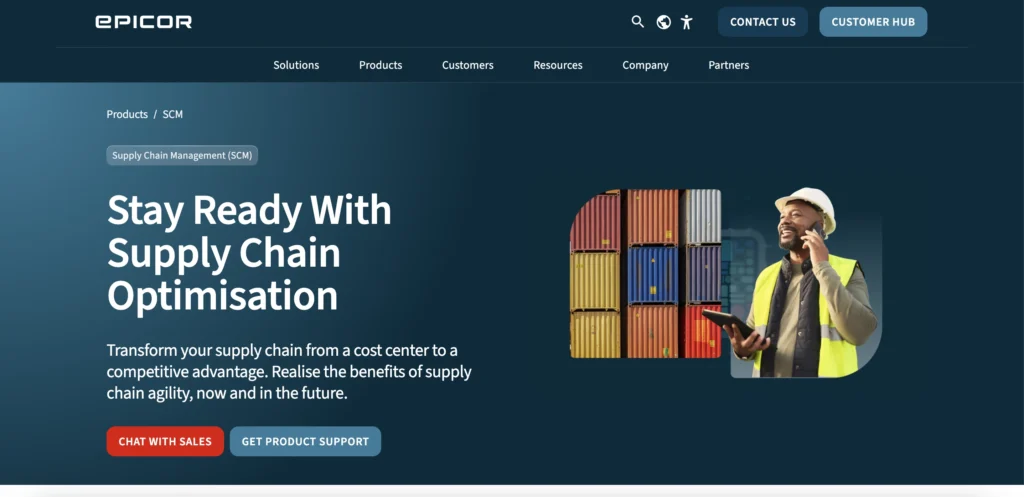
Key Features:
✅ Manufacturing-Focused Supply Chain Collaboration: Designed for factory and warehouse operations.
✅ AI-Powered Inventory Planning: Ensures optimal stock levels based on production cycles.
✅ Supplier & Logistics Coordination: Centralized dashboard for vendor and transportation management.
✅ Seamless ERP Integration: Connects supply chain data with financial and operational systems.
Limitations:
❌ Best for Manufacturers: Less suited for retailers and service-based supply chains.
❌ ERP Dependency: Works best with Epicor ERP, limiting flexibility for non-users.
Ratings:
- G2: 4.2/5
- Gartner: 4.8/5
Conclusion
The right supply chain collaboration software is essential for streamlining operations, improving communication, and driving business growth. Each of the platforms we’ve covered in this blog offers unique features, from AI-driven analytics to real-time tracking and supplier collaboration. As we move into 2025, businesses that adopt these tools will be better positioned to manage complex supply chains, improve efficiency, and reduce costs.
Whether you’re looking for a cloud-based solution like GoComet or an enterprise-grade tool like SAP, the right software can transform your supply chain into a competitive advantage.
FAQs
Q: What is the best supply chain collaboration software?
A: The best software depends on your business needs. For real-time tracking and freight optimization, GoComet is a great option. For medium enterprises, SAP or Oracle provide comprehensive solutions.
Q: How do I choose the right supply chain collaboration software?
A: Consider factors like ease of integration, real-time visibility, user interface, and scalability. Look for software that aligns with your business size and complexity.
Q: What features should I look for in supply chain collaboration software?
A: Look for features like real-time data tracking, automated workflows, supplier collaboration, and advanced analytics.
